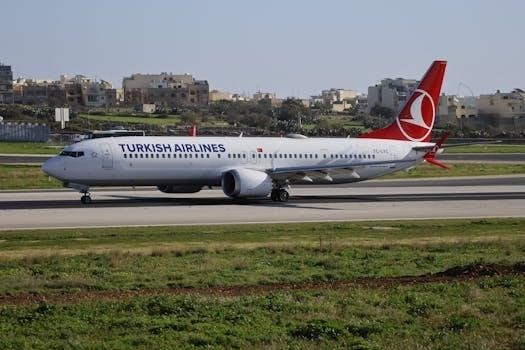Multi-Engine Flight Test⁚ An Overview
The multi-engine practical exam, or checkride, is the final step toward a multi-engine rating, assessing knowledge and skill in operating these aircraft. This test includes both an oral examination and a flight evaluation.
The journey to obtaining a multi-engine rating culminates in the practical exam, often referred to as the “checkride.” This assessment is designed to rigorously evaluate a pilot’s proficiency in handling aircraft with more than one engine. Unlike single-engine certifications, the multi-engine rating demands a deeper understanding of asymmetric thrust, engine-out procedures, and the unique challenges associated with multi-engine operations. This practical exam is not just a formality; it is a comprehensive evaluation of a pilot’s knowledge, skills, and decision-making abilities in a multi-engine environment. It is a critical step to ensure that pilots are competent to safely operate complex multi-engine aircraft. Successfully completing the practical exam marks a significant milestone in a pilot’s career, opening doors to opportunities in advanced aviation operations. The checkride consists of an oral examination, which assesses the theoretical knowledge and a flight test, which demonstrates practical skills.
Key Components of the Multi-Engine Flight Test
The multi-engine flight test consists of two key parts⁚ an oral examination, which tests theoretical knowledge, and a flight test, which evaluates practical skills and procedures.
Oral Examination Content
The oral examination for a multi-engine rating assesses a pilot’s theoretical understanding, complementing the practical flight test. This part of the checkride delves into the pilot’s knowledge of multi-engine aircraft systems, including engine operations, fuel management, and electrical systems. Examiners will probe the applicant’s comprehension of performance characteristics, such as critical engine failure procedures, and limitations specific to multi-engine aircraft. Furthermore, they’ll explore the pilot’s understanding of relevant regulations, including those pertaining to multi-engine operations. The oral exam also covers emergency procedures specific to multi-engine aircraft, ensuring the pilot is well-prepared for unusual situations. This thorough assessment of theoretical knowledge is crucial before proceeding to the practical flight test.
Flight Test Maneuvers and Procedures
The practical flight test for a multi-engine rating encompasses a range of maneuvers and procedures designed to evaluate a pilot’s competence. It will include normal and emergency operations specific to multi-engine aircraft, such as engine start-up, run-up, and taxiing. The test will assess the pilot’s ability to perform maneuvers like slow flight, stalls, and steep turns, while maintaining precise control of the aircraft. A significant aspect of the flight test includes simulated engine failure during various phases of flight, requiring the pilot to demonstrate effective procedures for identifying the failed engine and maintaining control. Successful completion of these maneuvers is crucial for obtaining the multi-engine rating.
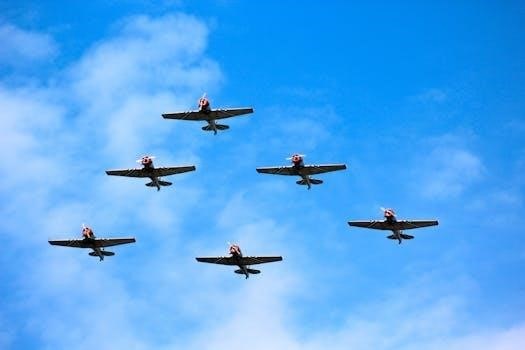
Standards and Requirements
The multi-engine flight test adheres to strict standards, outlined in FAA Practical Test Standards (PTS) or Airman Certification Standards (ACS), ensuring consistent evaluation of pilot proficiency. These standards are crucial for certification.
FAA Practical Test Standards (PTS)
The FAA Practical Test Standards (PTS), specifically FAA-S-8081-6B and FAA-S-8081-12B, serve as a guide for multi-engine pilot checkrides. These documents detail the required knowledge and skill levels needed for certification. The PTS outlines the specific maneuvers, procedures, and standards that must be demonstrated by the applicant during the practical exam. These standards apply to both flight instructors and commercial pilots seeking multi-engine ratings. The PTS also provides references to study materials and background information, ensuring candidates are well-prepared. The FAA develops and maintains these standards, which are used by examiners to evaluate an applicant’s performance and competency. For multi-engine ratings, the PTS helps in establishing clear expectations for both the candidate and the examiner, promoting consistency and fairness in the evaluation process.
Airman Certification Standards (ACS) for Multi-Engine
The Airman Certification Standards (ACS), such as FAA-S-ACS-7B, are a newer approach to pilot certification, building upon the foundation of the PTS. Specifically for multi-engine ratings, the ACS details the precise knowledge and risk management elements required for successful completion of the practical test. This document goes beyond just maneuvers and procedures, incorporating critical thinking and decision-making skills. The ACS is designed to be a more comprehensive resource, integrating the knowledge, risk management, and skill aspects of each task. It provides a more holistic view of pilot competency and aims to standardize the evaluation process for multi-engine ratings. The ACS is a critical resource for applicants, instructors, and examiners, ensuring clear and consistent expectations for the multi-engine certification.
Canadian Aviation Regulations (CARs) and Standards
The Canadian Aviation Regulations (CARs), along with associated standards, dictate the requirements for obtaining a multi-engine class rating in Canada. Specifically, CAR Standard section 421.14 and Schedule 7 of Standard 428 outline the prerequisites for flight testing. These regulations ensure that candidates meet established proficiency levels before being permitted to operate multi-engine aircraft. The regulations also specify the necessary documentation and aircraft requirements for a flight test. Furthermore, the standards detailed in documents like TP 219E, the Flight Test Guide ⎯ Multi-Engine Class Rating ⎯ Aeroplane, provide a comprehensive overview of the procedures and marking criteria used during the evaluation. These CARs and standards are essential for all pilots and instructors involved in multi-engine training and testing in Canada, ensuring compliance and maintaining safety standards.
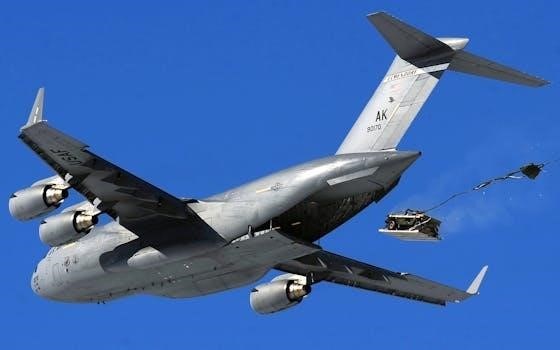
Preparation and Training
Effective preparation involves instructors using guides like TP11575E, ensuring candidates are familiar with test standards. Flight training units offer resources to aid in comprehensive multi-engine training.
Instructor’s Role in Preparing for the Test
Instructors play a crucial role in readying candidates for the multi-engine flight test. They utilize resources like the FAA’s Practical Test Standards and Transport Canada’s Instructor Guide to ensure thorough preparation. A key part is familiarizing students with the specific maneuvers and procedures outlined in these documents, as well as the marking criteria used by examiners. Instructors should guide students through ground school topics, ensuring a deep understanding of multi-engine systems and emergency procedures. They must also provide ample flight practice, focusing on both normal and abnormal operations. The goal is to develop proficiency, sound judgment and decision-making skills, making the candidate confident and fully prepared for the practical flight test. This includes ensuring understanding of the required standards and the ability to demonstrate those standards during the test.
Flight Training Unit Resources
Flight training units provide essential resources for multi-engine practical test preparation. These often include access to multi-engine aircraft, flight simulators, and well-equipped classrooms. Students can utilize flight manuals, training guides, and checklists specific to multi-engine operations. Instructors use resources like the FAA’s Airplane Flying Handbook and Transport Canada’s Instructor Guide. Units might offer structured courses that include ground school and flight training, complete with mock checkrides. Additionally, access to learning tools such as Redbird MCX simulators can provide cost-effective practice. Training units often have libraries of study materials, including FAA and Transport Canada publications, ensuring comprehensive preparation for the test and beyond.
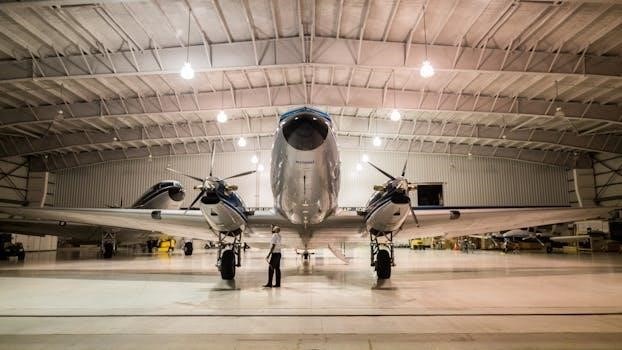
Specific Test Elements
The multi-engine flight test includes ground items, covering pre-flight planning and preparation. Additionally, air flight test items involve practical maneuvers, including start-up, taxiing, and emergency procedures.
Ground Flight Test Items
Ground flight test items are crucial preparatory tasks executed before the actual flight, focusing on planning and aircraft readiness. These items, assessed prior to the flight, involve detailed checks and procedures. Candidates must demonstrate proficiency in areas like weight and balance calculations, performance data analysis, and understanding of aircraft systems. This phase also includes reviewing weather conditions, assessing runway suitability, and ensuring all necessary documentation is in order. Thorough pre-flight planning, including fuel calculations and emergency procedures, is mandatory. The successful completion of ground items is a prerequisite for advancing to the air portion of the flight test, establishing a strong foundation for a safe flight. These assessments ensure the candidate understands the operational aspects before commencing flight.
Air Flight Test Items
Air flight test items involve a range of maneuvers and procedures performed during flight, designed to evaluate a pilot’s practical skills. This includes a thorough pre-flight inspection of the aircraft, ensuring it’s airworthy before starting. The evaluation covers start-up procedures, run-up checks, and taxiing techniques. During the flight, candidates will perform various maneuvers, showcasing their ability to handle the aircraft effectively; Emergency procedures, such as engine failure simulations, are also a critical component of this assessment. Precision in navigation, altitude control, and airspeed management is crucial. The air test evaluates a pilot’s overall competency in operating a multi-engine aircraft safely and efficiently, from pre-flight to landing. The examiner will monitor the candidate’s performance and decision-making abilities.
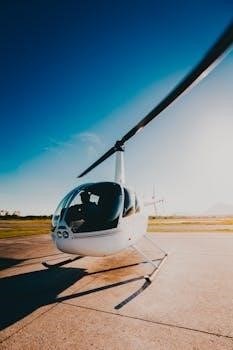
Outcomes and Procedures
The multi-engine flight test results in either a pass, a partial pass requiring retesting of some elements, or a failure requiring a complete retest. Specific protocols apply to each outcome.
Partial Flight Test Requirements
A partial flight test is required when a candidate fails one or two air flight test items but otherwise meets the passing criteria. This partial retest focuses solely on the failed maneuvers from the original evaluation. It must be completed within 30 days of the initial test date and the candidate must provide a copy of the original test report. The partial flight test takes place after the candidate completes all the other required items during the subsequent flight test. This allows candidates to address specific areas of weakness without repeating the entire exam. If a third item is failed then a complete re-test will be required, but if the candidate has no more than two failures, and has achieved a pass mark it is possible to be able to do a partial flight test.
Failure and Re-test Protocols
Failure on the multi-engine flight test occurs if the candidate does not achieve the minimum pass mark, fails any ground test item, or fails more than two air test items. A failure of any ground item prevents the flight portion of the test and requires a full re-test. One or two failed air items lead to a partial re-test on those specific maneuvers. However, a third air item failure necessitates a complete re-test. Safety-jeopardizing actions by the candidate also result in an immediate test failure and require a full retest. The examiner will stop the test and will provide a failing result.
Complaint Procedures
If a candidate is dissatisfied with the outcome of their multi-engine flight test, they may file a formal written complaint. This complaint should be directed to the Transport Canada Regional Office responsible for the examiner. The complaint must address the conduct of the test or the examiner’s performance, and a mere dissatisfaction with the results is not sufficient. To succeed, the candidate needs to show that the test was not properly conducted. After reviewing the case, the Regional Technical Team Lead may authorize a re-test with a different examiner or a Civil Aviation Inspector, offering a fresh evaluation without prejudice.
